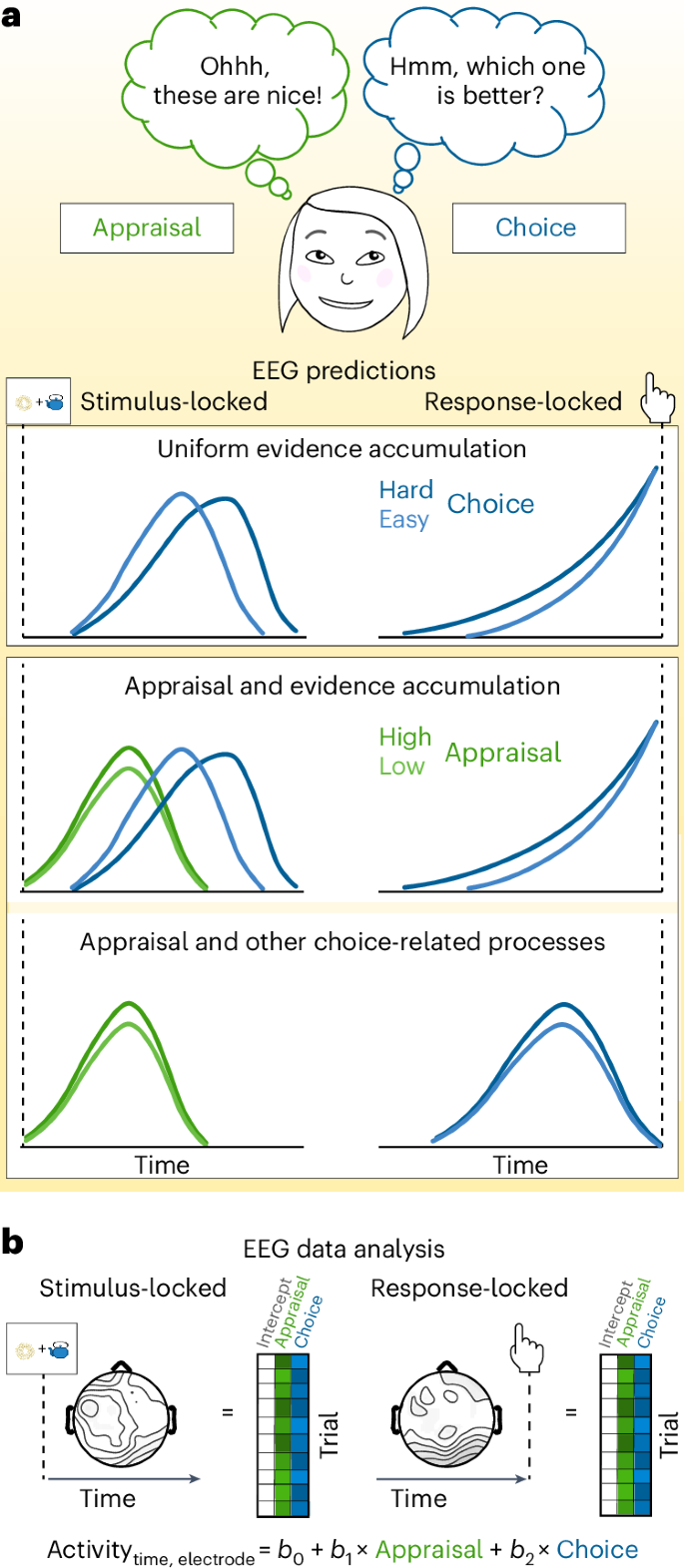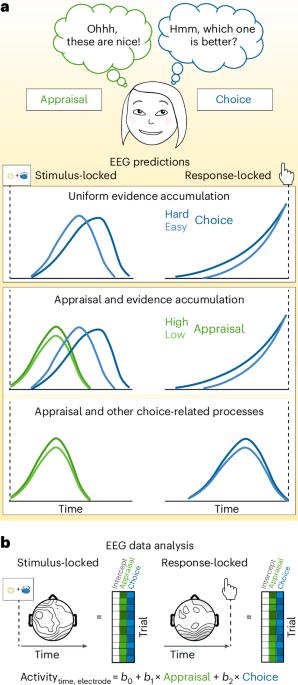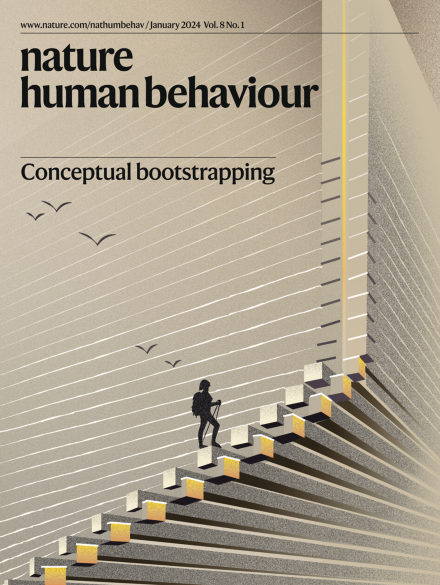Common neural choice signals can emerge artefactually amid multiple distinct value signals
IF 21.4
1区 心理学
Q1 MULTIDISCIPLINARY SCIENCES
引用次数: 0
Abstract
Previous work has identified characteristic neural signatures of value-based decision-making, including neural dynamics that closely resemble the ramping evidence accumulation process believed to underpin choice. Here we test whether these signatures of the choice process can be temporally dissociated from additional, choice-‘independent’ value signals. Indeed, EEG activity during value-based choice revealed distinct spatiotemporal clusters, with a stimulus-locked cluster reflecting affective reactions to choice sets and a response-locked cluster reflecting choice difficulty. Surprisingly, ‘neither’ of these clusters met the criteria for an evidence accumulation signal. Instead, we found that stimulus-locked activity can ‘mimic’ an evidence accumulation process when aligned to the response. Re-analysing four previous studies, including three perceptual decision-making studies, we show that response-locked signatures of evidence accumulation disappear when stimulus-locked and response-locked activity are modelled jointly. Collectively, our findings show that neural signatures of value can reflect choice-independent processes and look deceptively like evidence accumulation. Frömer et al. show using EEG that stimulus-locked activity can mimic an evidence accumulation process when aligned to the response.


在多种不同的价值信号中,可能会人为地出现共同的神经选择信号
之前的研究已经发现了基于价值决策的神经特征,包括与被认为支持选择的斜坡式证据积累过程非常相似的神经动态。在这里,我们测试了这些选择过程的特征是否可以从额外的、与选择 "无关 "的价值信号中分离出来。事实上,在基于价值的选择过程中,脑电图活动显示了不同的时空集群,其中刺激锁定集群反映了对选择集的情感反应,而反应锁定集群则反映了选择难度。令人惊讶的是,这两个集群都不符合证据积累信号的标准。相反,我们发现当刺激锁定活动与反应相一致时,可以 "模仿 "证据积累过程。我们对之前的四项研究(包括三项知觉决策研究)进行了重新分析,结果表明,当刺激锁定和反应锁定活动联合建模时,证据积累的反应锁定特征就会消失。总之,我们的研究结果表明,价值神经特征可以反映与选择无关的过程,而且看起来很像证据积累。
本文章由计算机程序翻译,如有差异,请以英文原文为准。
求助全文
约1分钟内获得全文
求助全文
来源期刊

Nature Human Behaviour
Psychology-Social Psychology
CiteScore
36.80
自引率
1.00%
发文量
227
期刊介绍:
Nature Human Behaviour is a journal that focuses on publishing research of outstanding significance into any aspect of human behavior.The research can cover various areas such as psychological, biological, and social bases of human behavior.It also includes the study of origins, development, and disorders related to human behavior.The primary aim of the journal is to increase the visibility of research in the field and enhance its societal reach and impact.
 求助内容:
求助内容: 应助结果提醒方式:
应助结果提醒方式:


